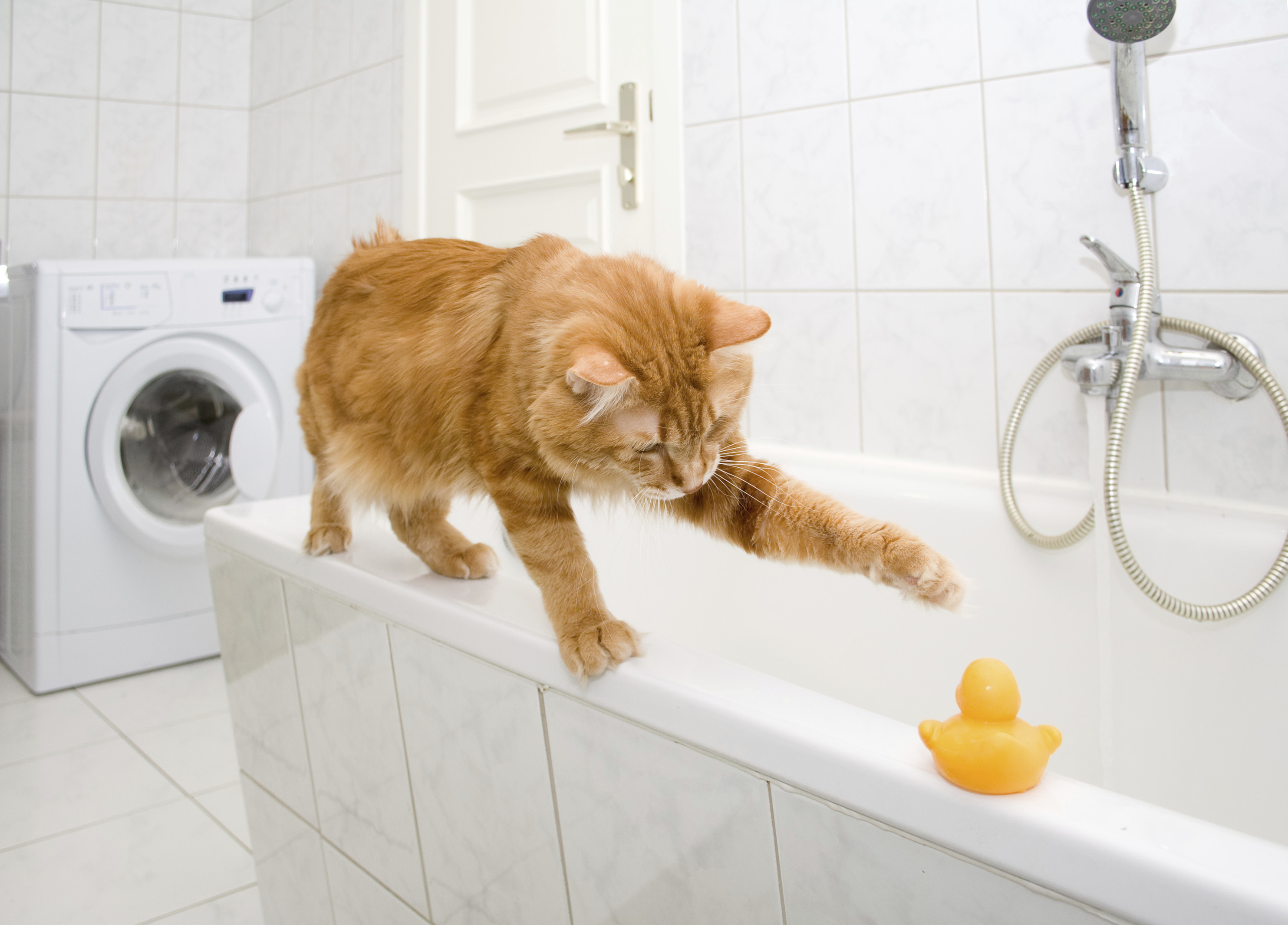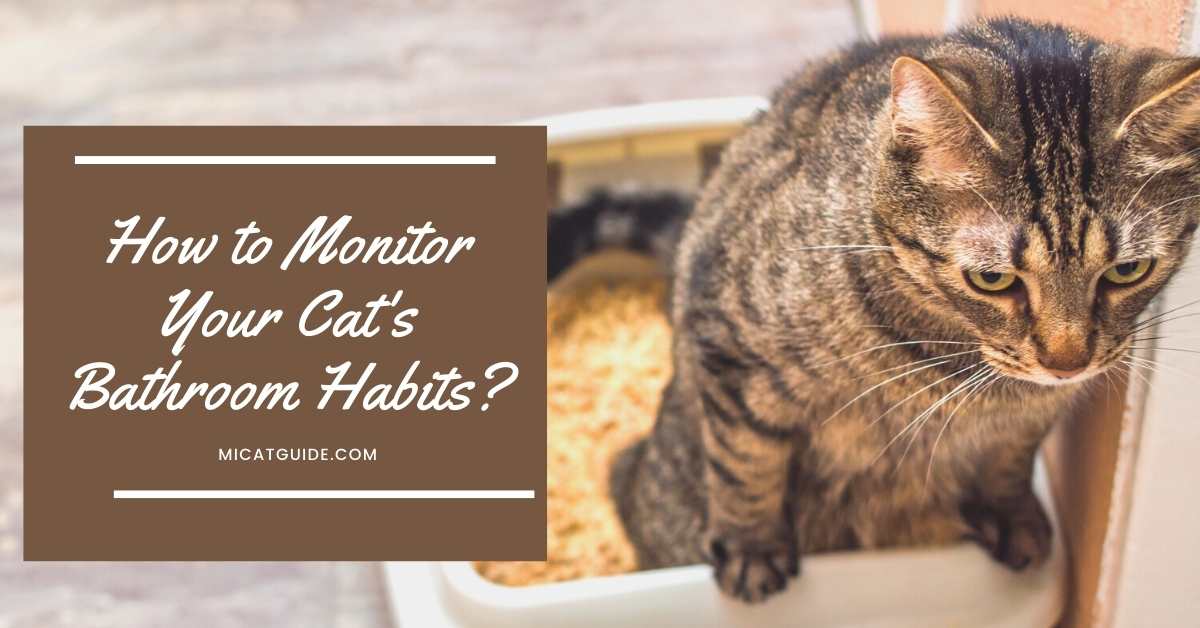Introducing the Bathroom Isolation Period

Bringing a new kitten into your home is an exciting time, but it’s important to ensure a smooth transition for both you and your furry friend. One common practice is to confine the kitten to a bathroom for a short period, and this is often referred to as the “bathroom isolation period.” This controlled environment can help your kitten adjust to their new surroundings and reduce stress.
Rationale for Bathroom Isolation
Confining a new kitten to a bathroom for a few days is a common practice that helps acclimate them to their new home. This period of isolation provides a safe and controlled environment, allowing the kitten to feel secure and reduce stress. It also allows you to monitor their behavior and health closely during their initial days in your home.
Benefits of a Controlled Environment
- Reduced Stress and Anxiety: A new environment can be overwhelming for a kitten, especially if they are coming from a shelter or breeder. The bathroom provides a small, familiar space that helps them feel secure and less anxious.
- Easier Adjustment: A controlled environment allows the kitten to adjust to their new home at their own pace. They can explore the bathroom, get used to their new litter box, and become familiar with their new humans without being overwhelmed.
- Easier Training: The bathroom isolation period provides an opportunity to establish routines and teach basic commands, such as using the litter box, scratching post, and coming when called.
- Safe Exploration: The bathroom is a relatively safe space, free from potential hazards like stairs, electrical cords, and toxic plants, allowing the kitten to explore safely.
Potential Risks of Immediate Free-Roaming
Allowing a new kitten to roam freely in your home immediately can pose certain risks. Here are some potential dangers:
- Hiding and Getting Lost: A new kitten might be overwhelmed by the vastness of a new home and try to hide, making it difficult to locate them.
- Accidents and Injuries: A new kitten might not be familiar with the hazards in your home, such as stairs, electrical cords, and toxic plants, increasing the risk of accidents and injuries.
- Stress and Anxiety: Being in an unfamiliar and potentially overwhelming environment can lead to stress and anxiety in a new kitten.
- Difficulty Establishing Routines: Without a controlled environment, it might be harder to establish routines for litter box training, feeding, and playtime.
Essential Bathroom Setup

The bathroom serves as your kitten’s temporary home during the isolation period, so creating a safe and comfortable environment is crucial. A well-equipped bathroom will help your kitten adjust to their new surroundings and minimize stress.
Items Needed
How long to keep new kitten in bathroom – To ensure your kitten’s safety and comfort in the bathroom, gather the following essential items:
- Food and Water Bowls: Choose bowls that are the right size for your kitten and are made of a material they can’t easily tip over.
- Litter Box: Select a litter box that’s large enough for your kitten to comfortably use and easy to clean. Choose a litter that’s appealing to your kitten and doesn’t irritate their sensitive nose.
- Food and Water: Choose a high-quality kitten food and fresh water. It’s recommended to provide both dry and wet food options to cater to their dietary needs.
- Scratching Post: A scratching post is essential for your kitten to satisfy their natural scratching instinct. Choose one that’s sturdy and tall enough for your kitten to stretch out on.
- Toys: Provide a variety of toys to keep your kitten entertained and stimulated. Choose toys that are safe for kittens, such as soft balls, crinkle toys, or interactive toys.
- Bedding: A soft bed or blanket will provide a cozy spot for your kitten to rest. Choose a material that’s washable and comfortable.
- Small Spray Bottle: This can be used for gentle deterrents if your kitten exhibits unwanted behaviors, like scratching furniture.
- Cleaning Supplies: Keep cleaning supplies on hand to maintain a hygienic environment for your kitten.
Bathroom Layout
The layout of the bathroom is important for providing a safe and stimulating environment for your kitten. Consider the following:
- Placement of Food and Water: Place the food and water bowls in a quiet corner, away from the litter box and other distractions.
- Placement of Litter Box: Position the litter box in a private area, away from food and water bowls. Make sure it’s easily accessible for your kitten.
- Placement of Scratching Post: Place the scratching post near a wall or corner to prevent it from tipping over.
- Placement of Toys: Scatter toys around the bathroom to keep your kitten entertained. You can also rotate toys regularly to keep them interested.
- Placement of Bedding: Provide a comfortable bed or blanket in a quiet corner of the bathroom.
Safety Precautions
It’s crucial to ensure your kitten’s safety in the bathroom. Consider the following precautions:
- Secure All Hazardous Items: Remove any potential hazards, such as cleaning supplies, medications, and sharp objects, from the bathroom. Store them securely out of your kitten’s reach.
- Cover Drains and Toilets: Ensure that drains and toilets are covered to prevent your kitten from falling in or getting trapped.
- Secure Loose Wires: Cover or secure any loose electrical cords or wires to prevent your kitten from chewing on them.
- Close the Bathroom Door: Keep the bathroom door closed to prevent your kitten from escaping and exploring other areas of the house before they’re ready.
- Monitor Your Kitten: Regularly check on your kitten to ensure they’re safe and comfortable. Watch for signs of stress or illness.
Duration of Bathroom Stay: How Long To Keep New Kitten In Bathroom
/girl-and-cat-141100600-57d9831a3df78c5833a5ace5.jpg)
The length of time your kitten spends in the bathroom is a crucial factor in their successful integration into your home. While it’s essential to provide a safe and secure environment for your new feline friend, it’s equally important to ensure they don’t become overly stressed or isolated. The duration of bathroom confinement is influenced by several factors, and understanding these nuances can help you create a smooth transition for your kitten.
Factors Influencing Bathroom Stay Duration, How long to keep new kitten in bathroom
The duration of a kitten’s bathroom confinement is influenced by a combination of factors, including their age, personality, and your individual circumstances.
- Age: Younger kittens, typically under 8 weeks old, may require a shorter bathroom stay as they are still learning to adjust to their new environment. Older kittens, especially those who have been in a shelter or foster home, may benefit from a longer isolation period to reduce stress and ensure a smooth transition.
- Personality: Some kittens are naturally more outgoing and adaptable, while others are more timid and reserved. Outgoing kittens may adapt more quickly to their new home and require a shorter bathroom stay, while shy kittens may need more time to acclimate and feel comfortable.
- Health: If your kitten is sick or has any medical conditions, it may be necessary to extend the bathroom stay to allow for proper treatment and monitoring.
- Household Dynamics: The presence of other pets, children, or a busy household can influence the duration of bathroom isolation. In homes with multiple pets or young children, it may be beneficial to extend the isolation period to allow the kitten to adjust to their new surroundings gradually.
Comparison with Other Approaches
While bathroom isolation is a common practice for introducing new kittens to their homes, it’s not the only approach. Some people opt for a more gradual introduction, allowing the kitten to explore the home in stages. Others choose to introduce the kitten to their existing pets immediately, under careful supervision.
- Gradual Introduction: This approach involves gradually expanding the kitten’s territory over a period of days or weeks, starting with a small room and gradually allowing them access to more areas of the house. This method can be less stressful for both the kitten and existing pets, but it may take longer for the kitten to fully integrate into the home.
- Immediate Introduction: This approach involves introducing the kitten to all of their new family members at once, under careful supervision. While this method can be faster, it can also be more stressful for both the kitten and existing pets. It requires a high level of vigilance and patience to ensure a positive experience for all involved.
Table Outlining Factors and Impact on Bathroom Stay Duration
The following table Artikels some key factors and their potential impact on the duration of a kitten’s bathroom stay:
| Factor | Impact on Bathroom Stay Duration |
|---|---|
| Kitten’s Age | Younger kittens may require a shorter stay; older kittens may need longer |
| Kitten’s Personality | Outgoing kittens may adapt quickly; timid kittens may need more time |
| Household Dynamics | Busy households or homes with other pets may require a longer stay |
| Kitten’s Health | Sick kittens may need a longer stay for treatment and monitoring |
You can usually keep a new kitten in the bathroom for a few days to a week while they adjust to their new home. Once they’re settled, you can start introducing them to other rooms gradually. And hey, if you’re looking to spruce up your bathroom, you might consider a natural wood bathroom vanity 60 inch – it’ll make your bathroom feel more luxurious and stylish.
Just make sure it’s kitty-proof, or you might find your kitten’s new favorite scratching post! Once you’ve got the bathroom all set, you can start introducing your kitten to the rest of your house.
You can usually keep a new kitten in a bathroom for a couple of days while they adjust to their new home. It’s a safe, contained space, but don’t forget to make it comfortable! A good tip is to set up a comfy bed and some toys, and maybe even consider getting a new shower head, like those you might find in a John Lewis bathroom shower fittings review.
The bathroom should be a place your kitten enjoys, not just a temporary holding area, so make sure it’s cozy and inviting!